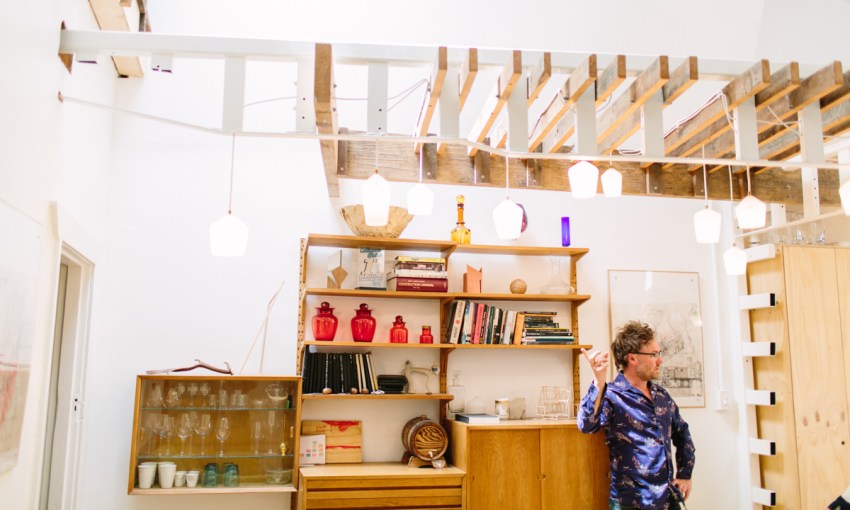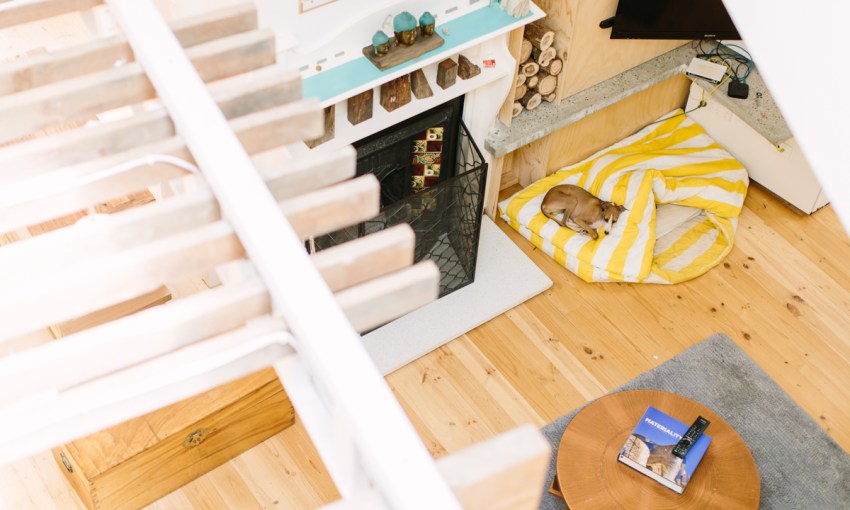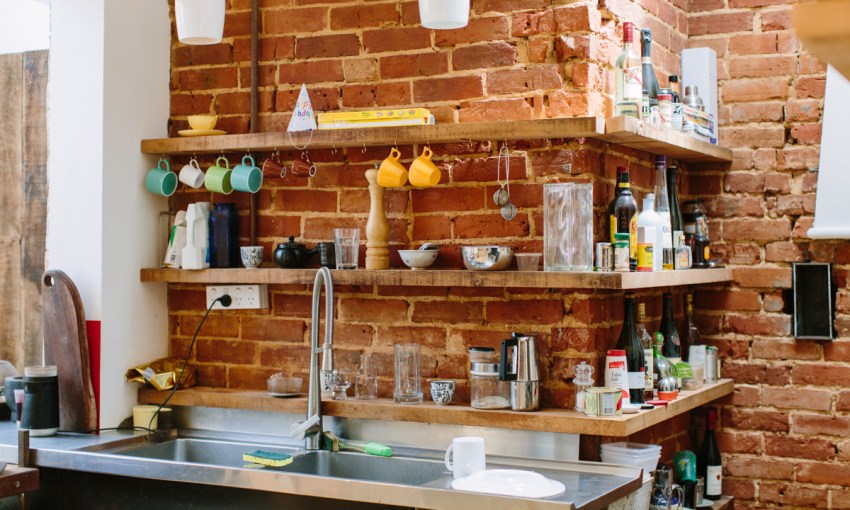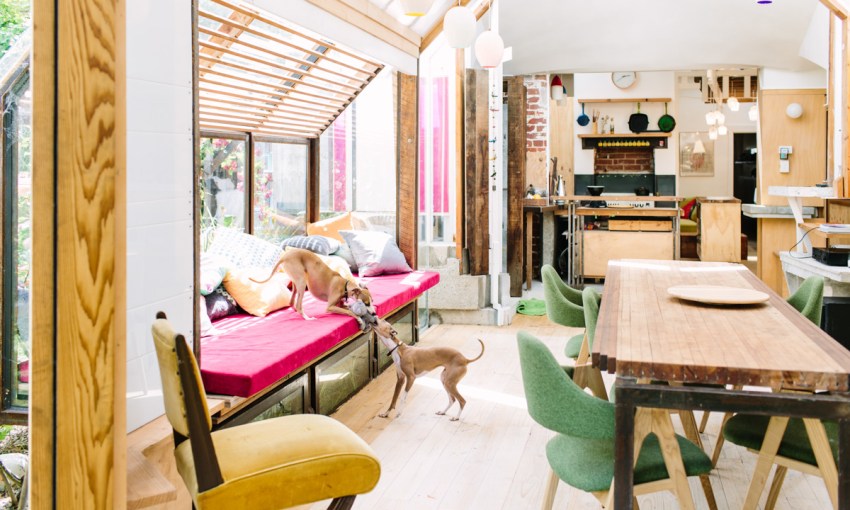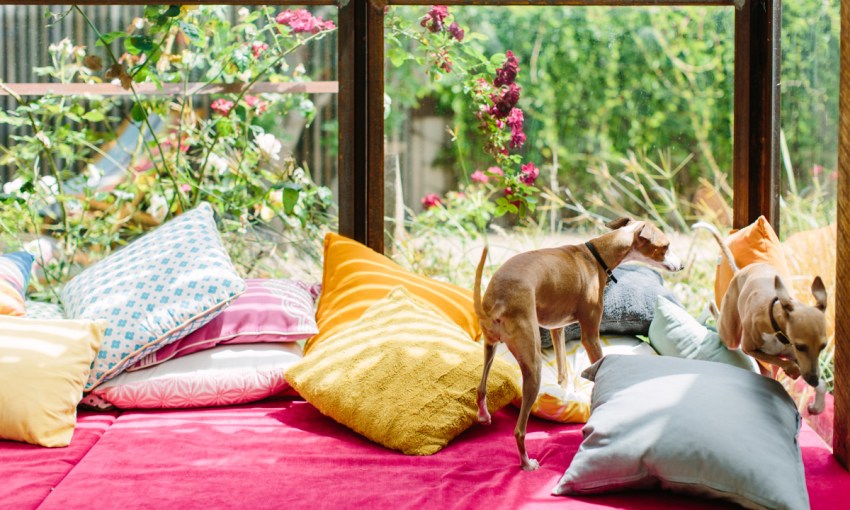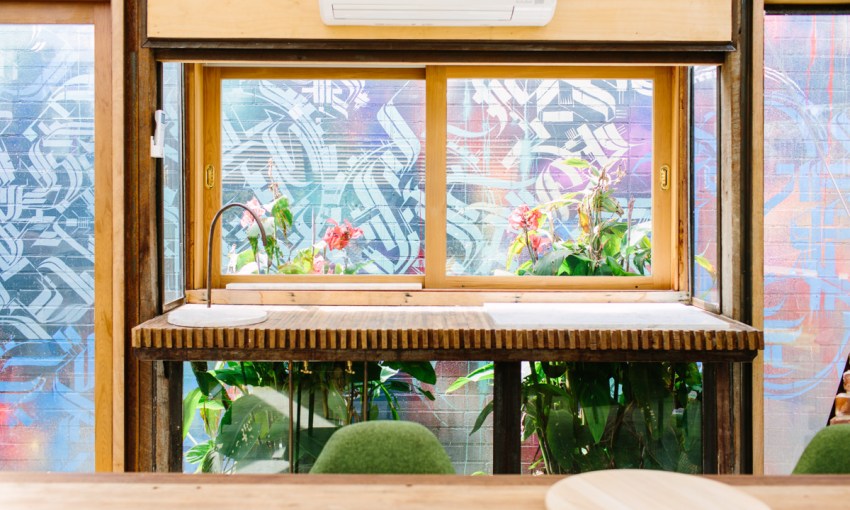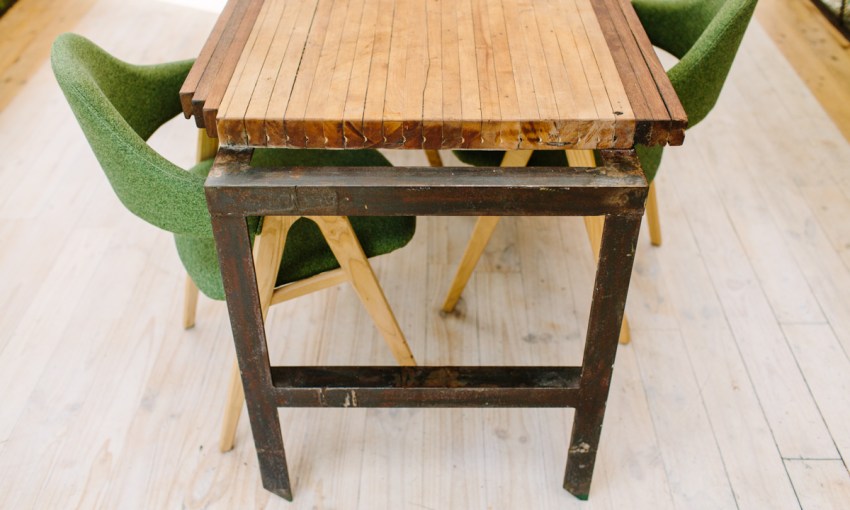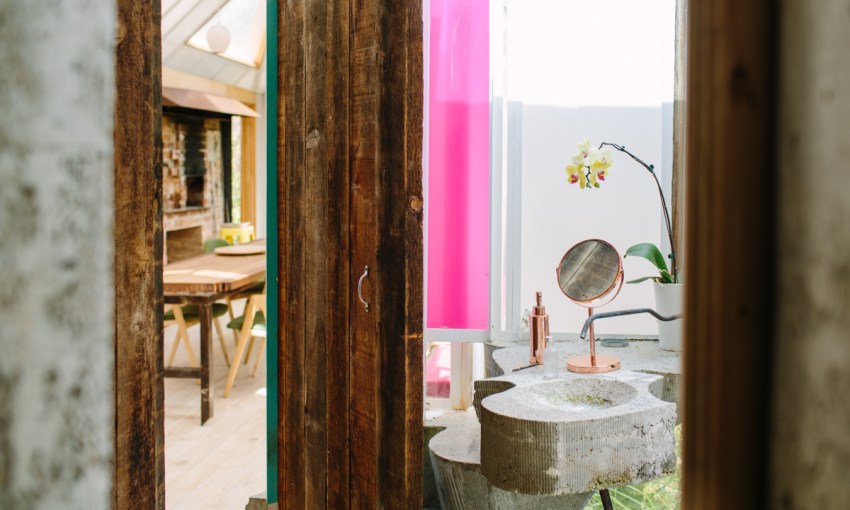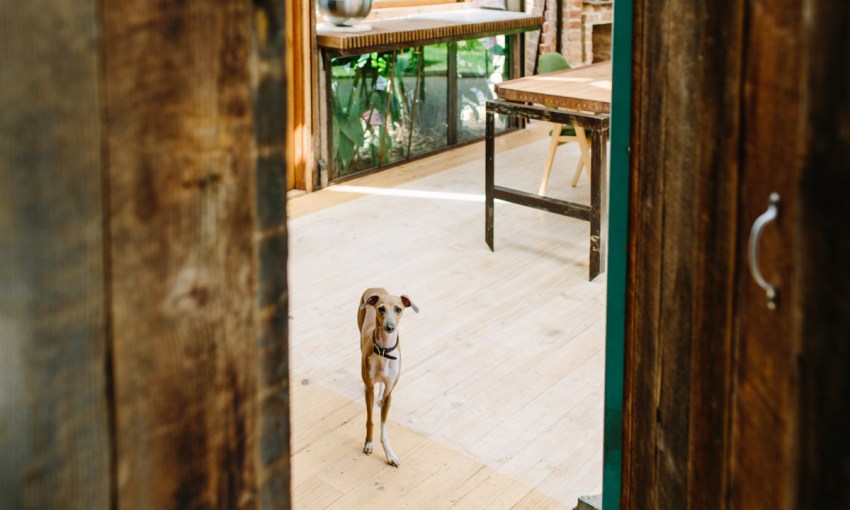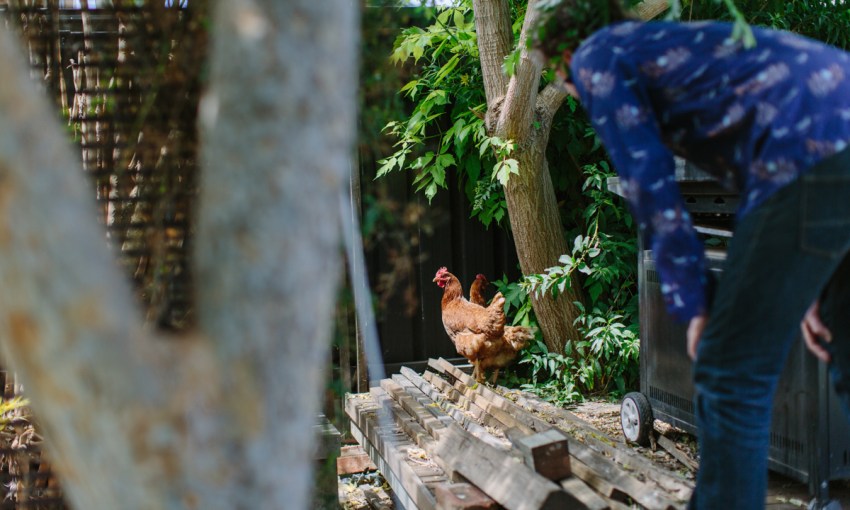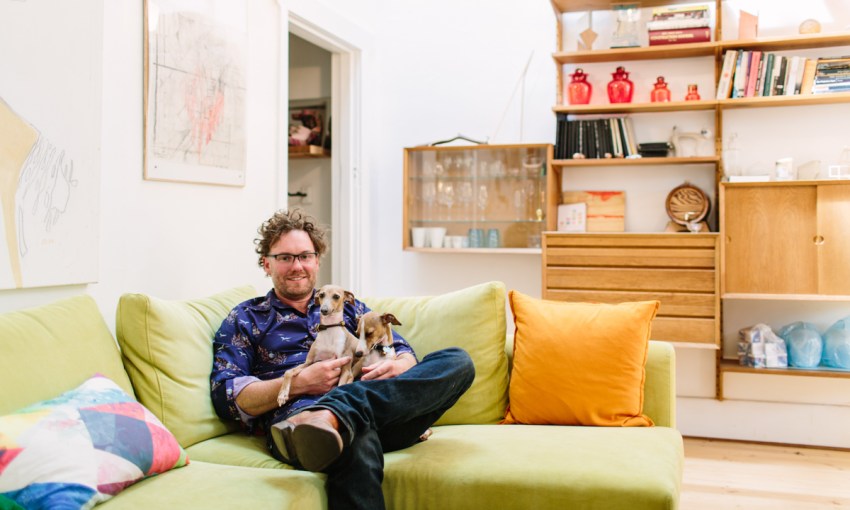Give Damien Chwalisz the freedom to do what he does best and he may just build one of Australia’s best homes. That’s what he did with his own Brompton-based home.
Demolition by design in one of Australia’s Best Homes
The home of local architect, Damien Chwalisz, was recently featured on Foxtel channel, Lifestyle, as a part of the new series ‘I Own Australia’s Best Home.’
His place was featured among 27 homes from around the nation, which is notable considering his little place sat among many mansions and big budget architectural undertakings.
Damien Chwalisz is a South Australian based architect, builder and designer. See more of his work here.
The reason Damien’s home was featured wasn’t because of the budget or size of his build but the process, full of “idiosyncrasies and innovative features” that Damien says caught the attention of the show’s producers.
“The focus is not so much on the slick detailing, it’s more on the interest and the funny things that might arise. This house kind of stands as a real crystalline example of a process… the result of a process which is able to enact in a fairly freeform fashion.”

Re-purposed plywood from an art exhibition and a sink from a scrap yard.
Damien says that when he bought the Brompton house in 2007, it was at the worst possible starting point: “Wrong orientation, party wall to a troubled neighbour, 80s row cottages on the other side, the garden was all grey concrete and a couple of exotic trees, in some ways it was a very blank canvas that required a lot of contortion.”
The result of that contortion is a space completely outside the normal for even a quirky neighbourhood like Brompton. Walking through the home you can see Damien’s ideas as they function – you can see Damien’s imagination.
“The project was very much built on the back of serendipity – for what we came across and what we were able to reconstitute.” Or, de-construction re-assemblage, as Damien calls it.
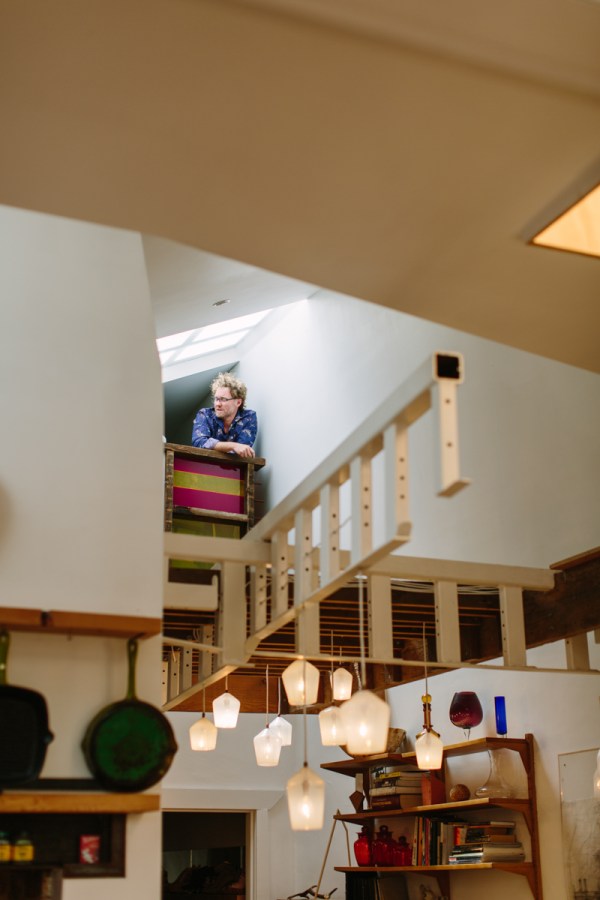
The open ceiling space used to be an office.
“A big part of my practice now is getting involved in that demolition site or up in the front line of the demolition trying to extract as much material as possible,” Damien says. A lot of the material came out of local education facilities, old warehouses from “down the road,” art exhibitions Damien was involved in, the old Goodwood Bowling Alley, and from the very house itself.
“As we demolish the house we’re re-acquiring the materials that we were pulling out of it to kind of re think how that could be re-organised,” says Damien. For example, the shower-head is made out of scrap copper. All the glass blocks in the shower are the ends of runs. The bathroom sink he made himself via the process of cement form work – a technique often employed in Damien’s projects.
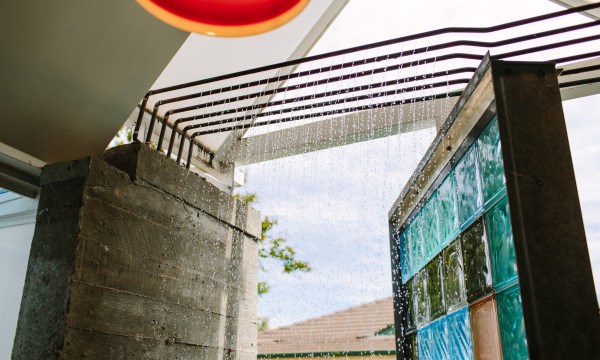
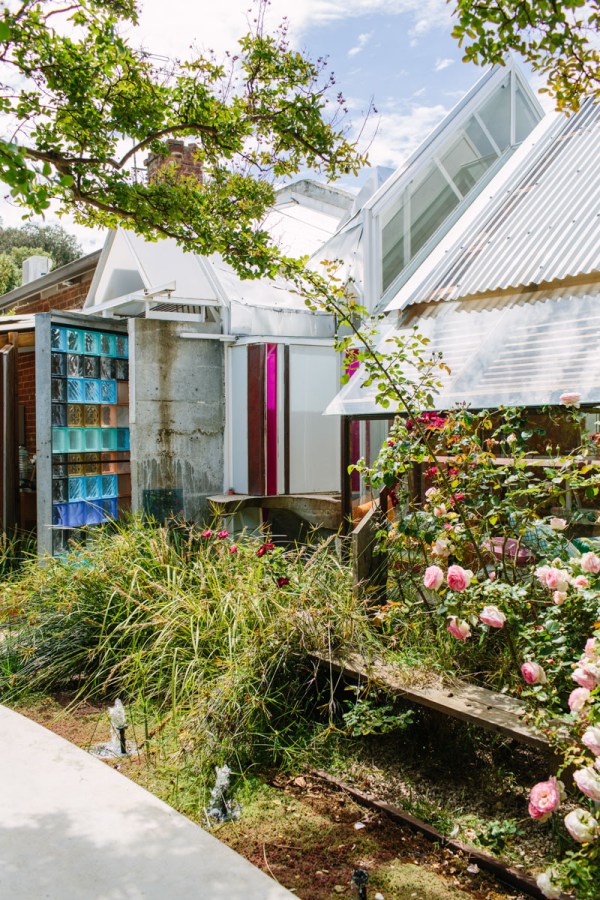
Water from the open-air bathroom runs straight into the pond.
“I’m pretty interested in trying to allow the processes of fairly ordinary materials (like cement), but employing those materials to find out what kind of arbitrary forms come out of that,” says Damien. “It could be that, or it could be something different, but it doesn’t really matter. In that process, in that attitude, there’s a real efficiency. In a way it’s the un-designed, but it’s the process that’s been designed. Not the object.”
And parts of this house are built like that. Not all, but some.
“We do plan heavily – lots of design and planning. But when it comes to the construction process, we allowed for flexibility and playing to people’s strengths. You find good tradies who are interested in doing things slightly out of the ordinary – flexing themselves, seeing what happens.”
There’s an advantage to building and renovating in this way. In particular, for young couples and families with land in inner-city suburbs looking outward in their quest for the bigger and better, it allows for the possibility of staying right where they are.
“A lot of them hedge between ‘do we stay in here and renovate to a point, or are we overcapitalising?’ and ‘is the block too small to do something cool within the footprint that we can, or should we sell up and move?’” says Damien.
“It’s a typology of project where, if you’re really careful and clever about activating everything in the building, you can have a three bedroom, two bathroom house on a 120 square meter footprint on a 600 block of land with heaps of productive garden at the back, chickens, dogs, and lawn. It can fit a lot on a small block, including a small or medium family in this inner-city ring without spending much money.”
“If we’re working with someone who has enough trust in the process and crew, idiosyncrasies and innovative features are allowed to enter into the process.”
With enough trust, the possibility of owning one of Australia’s best homes becomes surprisingly realistic.
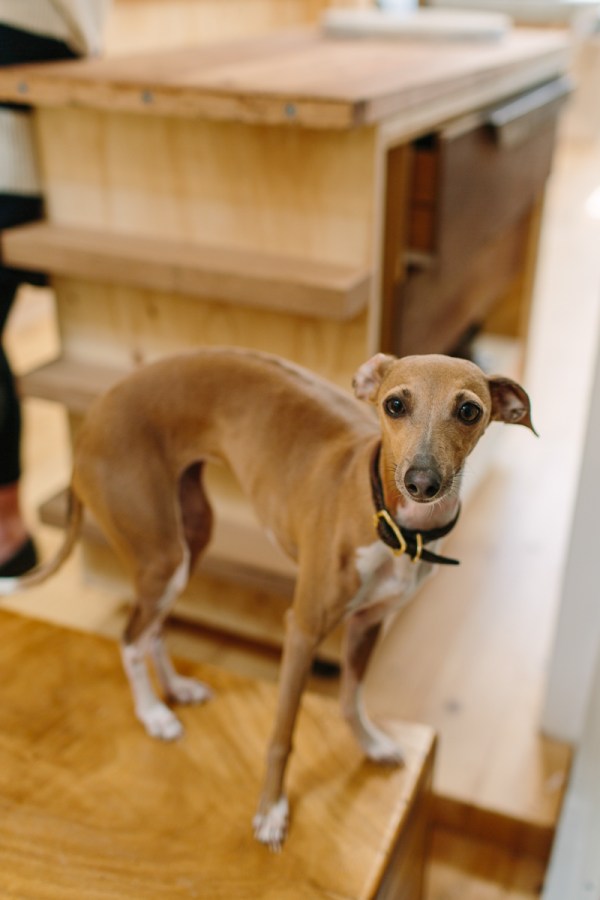
Doggo wants to stay in Brompton.



